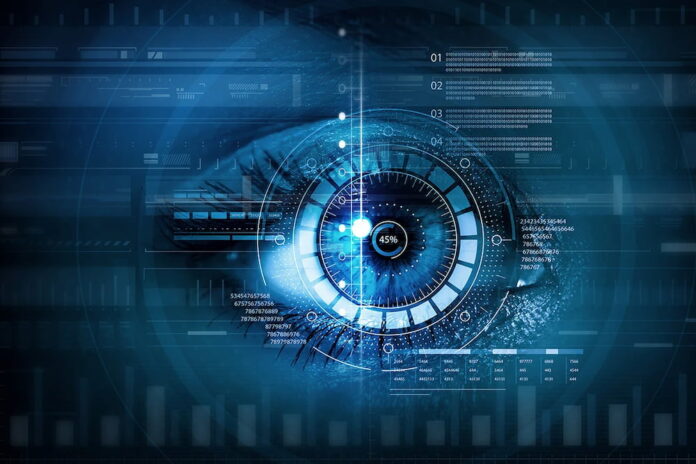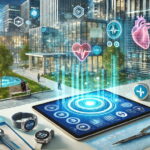In the ever-evolving field of medical technology, advancements in eye health have opened new horizons for diagnosing, treating, and preventing ocular diseases.
We’ll look into some of the latest breakthroughs in eye health technology, offering insights into how these innovations transform patient care and outcomes.
The Latest Advances in Eye Health Technology
In the dynamic realm of medical technology, the field of eye health stands out for its rapid advancements and innovative breakthroughs.
These developments are not just enhancing the precision of diagnostics and expanding the scope of treatments; they’re fundamentally transforming how we approach eye care, making it more personalized, accessible, and effective.
Artificial Intelligence in Ophthalmology
Artificial Intelligence (AI) has become a cornerstone in ophthalmology, particularly in disease detection and diagnosis.
By employing sophisticated algorithms to analyze retinal scans, AI sets new benchmarks for identifying conditions such as diabetic retinopathy, age-related macular degeneration (AMD), and glaucoma.
This technology’s prowess lies in its ability to match, and often surpass, the diagnostic accuracy of human experts, thereby streamlining the diagnostic process and enabling the early detection of diseases, which is critical for preserving vision.
Optical Coherence Tomography
Optical Coherence Tomography (OCT) represents a leap forward in non-invasive imaging, offering detailed cross-sectional views of the retina and optic nerve.
This technology has become indispensable for diagnosing and monitoring various vision-threatening conditions, including diabetic retinopathy, glaucoma, and macular degeneration.
OCT’s high-resolution images are crucial for evaluating retinal thickness, detecting fluid buildup, and visualizing structural changes within the eye, thereby aiding ophthalmologists in devising effective treatment plans.
The Promise of Home-Based OCT for Eye Care
The advent of home-based OCT systems signals a potential revolution in eye care, particularly in tele-ophthalmology.
These devices could significantly enhance remote patient monitoring and early disease intervention by enabling patients to conduct retinal scans at home.
However, challenges such as reducing the size and cost of these machines, ensuring ease of use, and accurate image interpretation must be addressed.
Future advancements may bring about compact, affordable OCT devices, broadening their accessibility and further transforming eye care by facilitating earlier detection and treatment of eye diseases, especially in underserved regions.
Genetic Testing
Genetic testing plays a pivotal role in the management of inherited retinal diseases. Through DNA analysis, it’s possible to identify specific genetic mutations responsible for conditions like retinitis pigmentosa and macular degeneration.
This knowledge enables personalized treatment strategies and early detection of potential complications and informs family planning decisions.
The progress in genetic testing technology is paving the way for more targeted therapies and exploring new clinical trials, offering hope for individuals with genetic retinal conditions.
Gene Therapy
Gene therapy is emerging as a groundbreaking approach to treating inherited retinal diseases, promising to halt disease progression and potentially restore vision.
By delivering a healthy copy of a defective gene directly into the patient’s eye, this innovative treatment targets the genetic root causes of conditions such as age-related macular degeneration, AMD and retinitis pigmentosa.
The implications of successful gene therapy are profound, providing a viable alternative to traditional treatments that merely manage symptoms.
Laser Treatments
Laser treatments have revolutionized the correction of refractive errors, presenting a modern solution for individuals with vision impairments like nearsightedness, farsightedness, and astigmatism.
These non-invasive procedures, including LASIK and PRK, have transformed the landscape of vision correction by offering a permanent alternative to glasses or contact lenses.
The precision and minimal recovery time associated with laser eye surgery have made it a popular choice for those seeking to improve their vision quality.
Improving Eye Care Through Mobile Apps
The integration of mobile applications into eye care has significantly enhanced patient engagement and self-monitoring.
These apps facilitate remote consultations, offer medication reminders, and provide alerts on vision changes, thereby improving the management of eye conditions.
Thereby improving the management of eye conditions.
Key features include:
– Personalized care plans
– Symptom tracking
– Secure messaging with healthcare providers
Empowering patients to take an active role in their eye health management.
Vision Therapy
Vision therapy represents a bespoke approach to improving visual functions, particularly for individuals with low vision or impairments.
By targeting specific areas such as visual motor coordination and eye movement control, these programs aim to enhance the overall quality of life.
Low vision management strategies complement vision therapy, including treatments to slow disease progression, innovative assistive technologies, and lifestyle adjustments to support ocular health.
Bionic Eye Implants
Bionic eye implants, or retinal prosthesis systems, offer a futuristic solution for restoring vision to those with severe vision loss due to retinal diseases.
These devices translate video images into electrical signals and transmit them to the retina, providing users with visual perception that can assist in navigating their environment.
Nanotechnology
Nanotechnology is at the forefront of revolutionizing drug delivery within ophthalmology, especially for treating posterior eye diseases.
Medicines can be delivered directly to targeted eye areas by utilizing nanoparticles, ensuring sustained and controlled release.
This approach holds the promise of overcoming the limitations of conventional treatments, offering a more effective means of addressing complex ocular conditions.
Challenges and Considerations
Despite these technologies’ significant promise, challenges remain in ensuring data security, patient privacy, and equitable access.
The successful adoption of these innovations requires ongoing education and training for eye care professionals to harness their benefits fully.
Conclusion
The landscape of eye health technology is rapidly changing, with innovative solutions offering new hope for patients with ocular conditions.
These advancements, from AI and teleophthalmology to gene therapy and bionic eyes, are enhancing the accuracy of diagnoses, expanding treatment options, and making eye care more accessible worldwide.
As research and development continue, the future of eye health looks brighter than ever, promising improved quality of life for millions affected by eye diseases.
Did you find this helpful? Check out our other helpful articles on our website.
Read Also
- Optimizing CT Protocols: The Hidden Key to Efficiency and Cost Savings in RadiologyIntroduction: Why CT Protocol Optimization Matters Computed Tomography (CT) is a cornerstone of modern diagnostic imaging, providing critical information across nearly every medical specialty. However, maximizing the value of CT — both clinically and financially — requires more than just advanced hardware. The real secret lies in the optimization of CT protocols. When CT protocols… Read more: Optimizing CT Protocols: The Hidden Key to Efficiency and Cost Savings in Radiology
- The Role of Carbide Burs in Modern Dental ProceduresAs a result of this procedures need to be well coordinated and to this end, precision tools are used by dental practitioners. Among the most essential tools in a dentist’s arsenal are carbide burs, which have revolutionized various aspects of dental work. Today’s dentistry cannot work without these tools as they are both strong, sharp,… Read more: The Role of Carbide Burs in Modern Dental Procedures
- Detection of Diabetic Retinopathy: The AI AdvantageDiabetic retinopathy (DR) is a leading cause of blindness among working-age adults, affecting millions worldwide. The prevalence of DR is alarmingly high, affecting an estimated 34.6 million people globally. In the United States alone, it is estimated that 7.7 million adults have some form of diabetic retinopathy. How Does Diabetes Affect the Eye? Most of… Read more: Detection of Diabetic Retinopathy: The AI Advantage
- Advances in Digital Health: Transforming Modern HealthcareThe healthcare landscape is undergoing a seismic shift with the advent of digital health technologies. These innovations are not just modern conveniences; they are transformative tools that bridge gaps in accessibility, improve patient outcomes, and empower individuals to take charge of their health. From wearable devices to telehealth and artificial intelligence, digital health is creating… Read more: Advances in Digital Health: Transforming Modern Healthcare
- The Latest Advancements in Urology ProceduresUrology, the branch of medicine concerning the urinary system and male reproductive organs, has seen remarkable advancements in recent years. Technological innovations have led to more precise, less invasive, and increasingly successful procedures that promise better outcomes for patients. From state-of-the-art robotics to personalized medicine approaches, the field of urology is evolving at a rapid… Read more: The Latest Advancements in Urology Procedures
- Navigating the Future of Healthcare: The Role of Technology and Innovation at Saint Luke’s HospitalIn an era of rapid technological advancement, the landscape of healthcare is undergoing a profound transformation. At the forefront of this evolution is Saint Luke’s Hospital, a leading medical institution in Los Cabos, Mexico. With a commitment to providing cutting-edge care to its patients, the hospital is harnessing the power of technology and innovation to… Read more: Navigating the Future of Healthcare: The Role of Technology and Innovation at Saint Luke’s Hospital
- 8 Tips For Aligning Optical Systems In Medical DevicesProper alignment is crucial when working with optical systems in medical devices. Even the slightest misalignment can throw off measurements and affect diagnostic accuracy. This article provides straightforward tips to help ensure precise optical alignment for reliable medical results. Start With The Basics Before getting into the nitty-gritty of alignment, it’s important to understand some… Read more: 8 Tips For Aligning Optical Systems In Medical Devices
- The Evolution of Orthodontic Technology: Exploring the Innovations Behind Modern BracesOrthodontic treatment has undergone a remarkable evolution over the years, driven by advancements in technology and materials. Modern braces represent the culmination of decades of research and innovation, offering patients more comfortable, efficient, and aesthetically pleasing orthodontic solutions. In this guide, we’ll delve into the technology behind modern braces, exploring the innovative techniques and materials… Read more: The Evolution of Orthodontic Technology: Exploring the Innovations Behind Modern Braces









